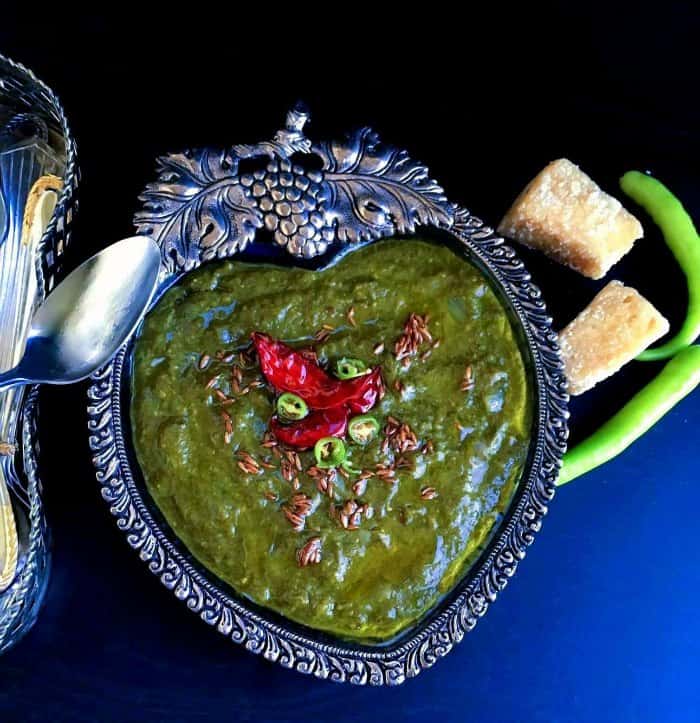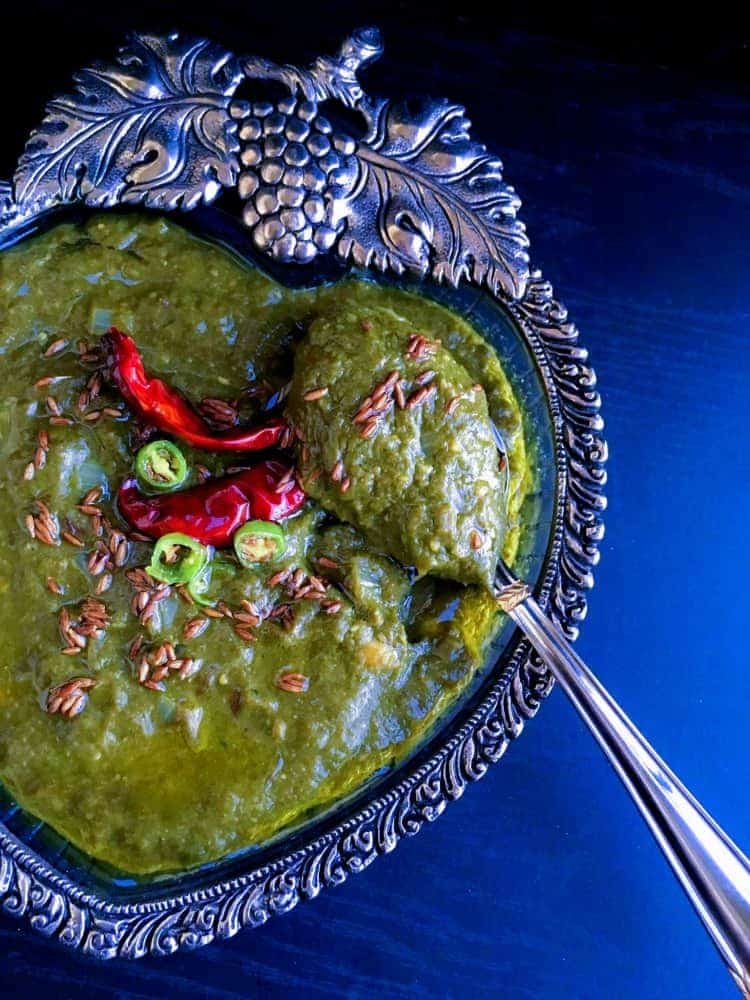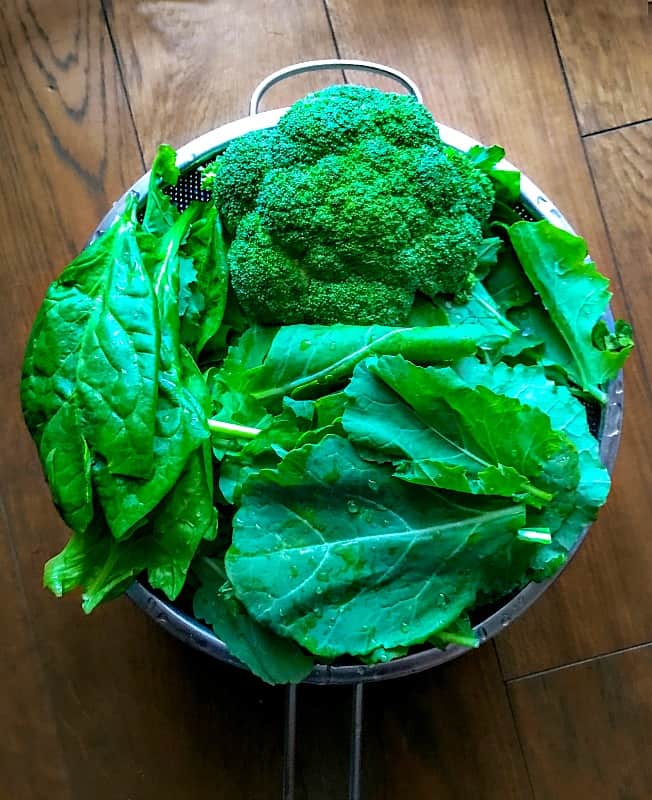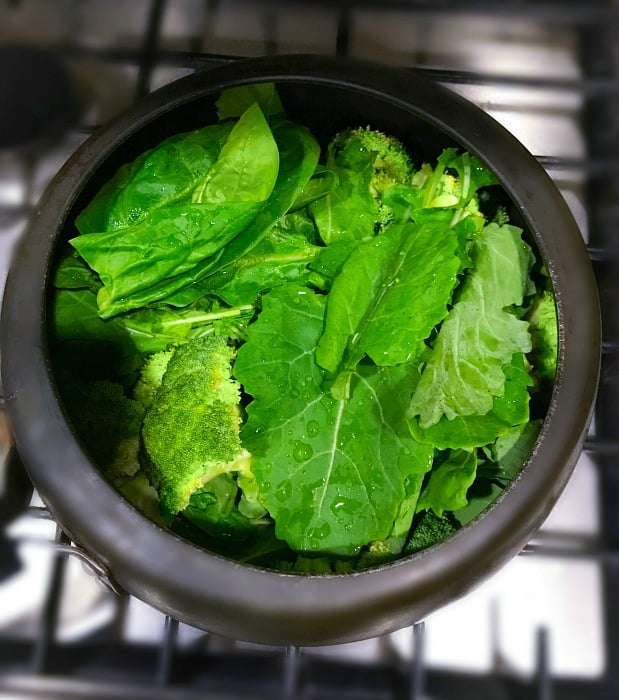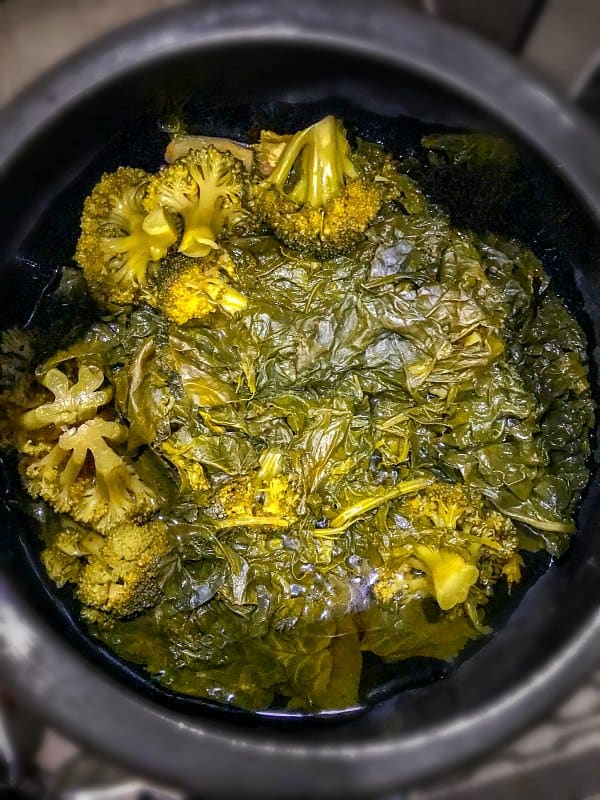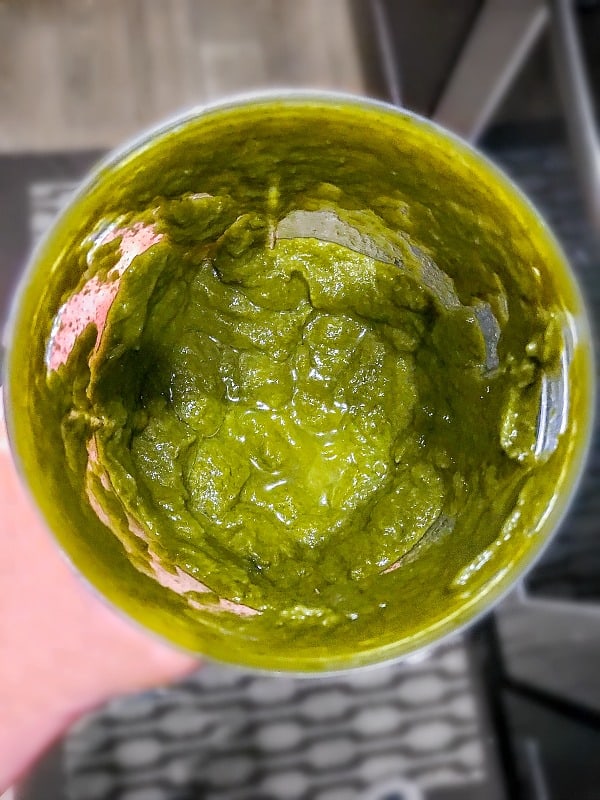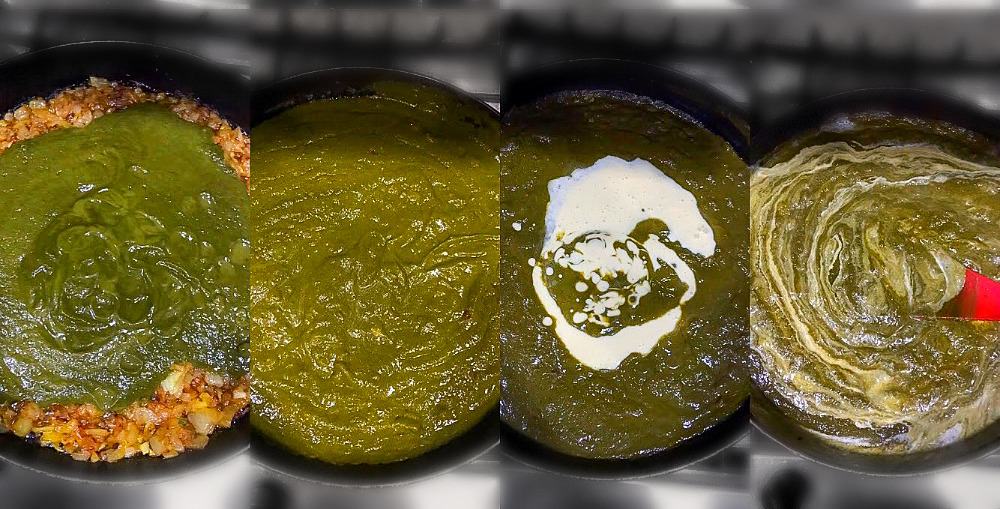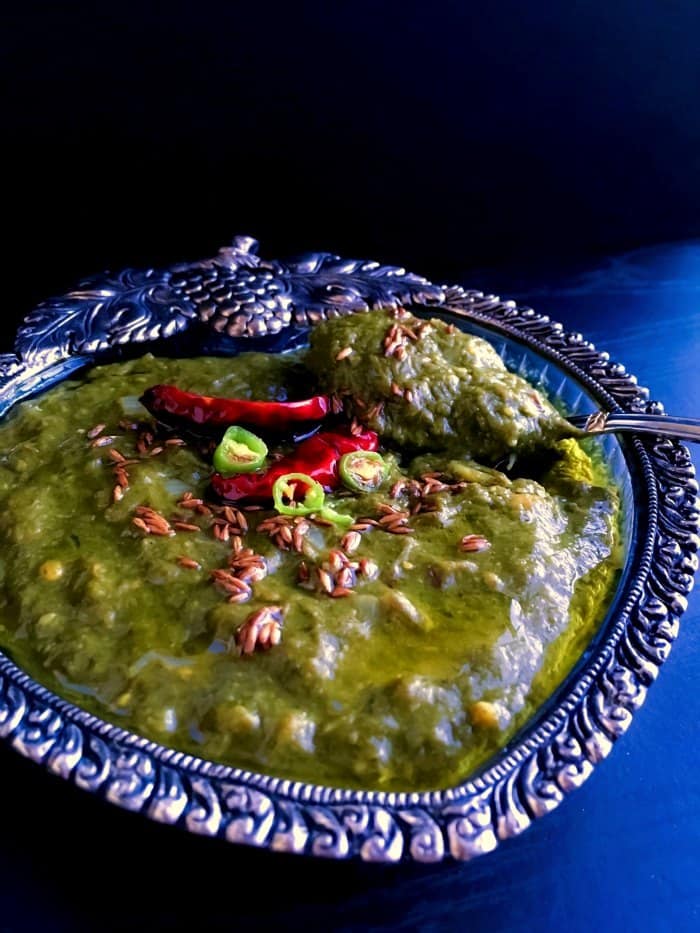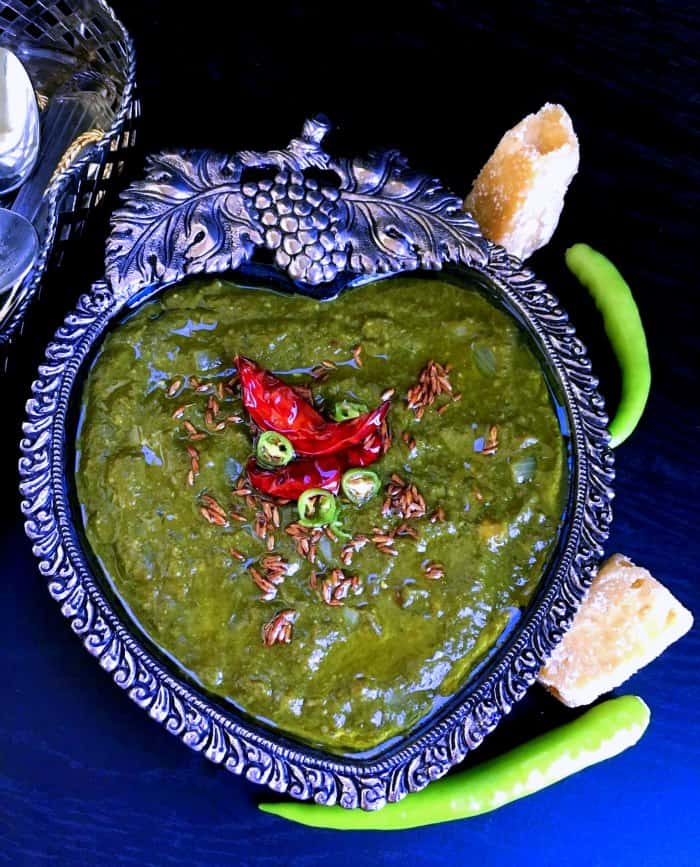Sarson ka Saag, popularly known as Sarson da Saag is an extremely delicious and popular Indian vegetable in winter. It’s creamy, rich in flavors (butter+spices) and served with “Makki di Roti’ Winter’s in India is the perfect time when you see a variety of fresh fruits n vegetables in the market and there are certain vegetables like Sarson (mustard), Spinach (Palak), Methi (Watercress), which are particularly available in winters.
What is Sarson ka Saag
It’s a sauteed and creamy mix of sarson leaves (long mustard leaves), spinach and bathua (green Indian leaves) or broccoli. All these leaves are blanched, pureed and then cooked in a mix of onion, spices and butter. It’s one of the extremely famous winter recipes from the state of Punjab, in Northern India. Where it’s popularly known as ‘Sarson Da Saag’ and eaten mostly with ‘Makki ki Roti‘ (Cornmeal Flatbread) with a dollop of fresh white butter on top and a small serving of jaggery to complete the meal. And as soon as mustard leaves are available, there is not a single restaurant/home in Northern India where you won’t find ‘Sarson da Saag with Makki di Roti’ as they are a perfect match together.
What are the Ingredients for Sarson ka Saag :
Although every home has its own preparation for the Sarson ka Saag, the basic remains the same, you mix :
Mustard Leaves Spinach Bathua (Chenopodium) or replace with Broccoli as I do. Ginger + Garlic Onion Spices: salt, chili powder, coriander powder. Makki Atta or Besan
Now, since we don’t get ‘Bathua leaves‘ here (it enhances the flavor of mustard leaves), we usually use broccoli which gives a similar texture and taste.
How to Make Sarson ka Saag:
The ‘Authentic Sarson da Saag’ method is slightly tedious and time consuming, however over the years, I’ve perfected this quick way to make the recipe with exactly the same taste. It involves 3 easy steps which are details below:
Step 1 – Boil/Blanch the Fresh Ingredients:
We start by adding the green ingredients (Sarson Saag, Spinach and Broccoli) + ginger in a big pot/pressure cooker or instant-pot and then cook it for few minutes. Cooking Time In Big Pot with Cover: 20 minutes over medium flames. Cooking Time In Pressure Cooker: 7 Minutes (3-4 whistles). Cooking Time In Instant-Pot: 3 Minutes (manual cooking).
Step 2 – Making a Paste:
Once the fresh ingredients are cooked, then we place everything in a food processor and blend or you can even use a hand blender. This will be a thick paste and use as little water as you can.
Step 2 – Cooking the Sarson ka Saag:
This is the last step of the process and it takes about 15 minutes to complete it. We start by sautéing onions using butter+oil mix in large pan/wok. Then we add 1/2 of spices and saute again. Then we add the sarson ka saag raw paste, mix everything and let it cook on low heat (covered). Let this slow cook/simmer for next 10 minutes (stir every minute). Finally add cream or yogurt or a mix of cream+yogurt and saute everything. Then cover and slow cook for next 15 minutes (stir every 2 minutes). Once thick and cooked, turn off the heat. If you like a light, a rich flavor, you can cook it on low heat for 1-2 hrs (stirring every 2-3 minutes). Infact, in many homes, the Sarson ka Saag is prepared early morning and then kept on low flames to cook it till evening. But they do keep adding butter or cream to keep the consistency rich. So this is a perfect recipe for slow cooker 🙂
The recipe, I’m sharing is absolutely easy to make and it’s very light. Infact, most of my family/friends, whoever has eaten this saag, says that ‘ it tastes rich in flavors yet feels light to eat’. This recipe is great for vegetarians as it’s packed with many leafy greens and if you’re a vegan, you can replace butter with any light oil.
Try the recipe this winter with your choice of side (bread/flatbread/rice/quinoa) and do let me know.
Extra Pro Tips :
How to Clean Sarson ka Saag:
The saag is often sold in large bunches and if buying from Indian stores, they are so fresh that they often come with soil/dirt sticking to the leaves. Hence, you need to open the bunch, separate each leaf and soak them in a large pot of water. Then gently massage and loosen any or all dirt or soil. Then remove all leaves from the pot and wash the leaves in running water. Wash 3-4 times to remove any soil. Then keep the leaves on the kitchen towel. If the steps are too thick and rough, the tear off the leaves from the stems (you can keep all the tender or small thin stems). Once everything is cleaned, the leaves are ready to use as per the directions above.
How does Sarson Saag Leaves Look: The sarson or mustard leaves are prickly on the edges DID YOU TRY MY RECIPE – AWESOME!!! Now Quickly SNAP A PICTURE & TAG : #easycookingwithmolly + @easycookingwithmolly on Instagram Connect with Me Here: Facebook / Pinterest / Instagram
Makki ki Roti (Cornmeal Flatbread) Makki di Roti
Besan Ki Roti – Gramflour-Chickpea Flatbread #glutenfree
Restaurant Style Mixed Dal Tadka – Indian Style Mixed Lentils
